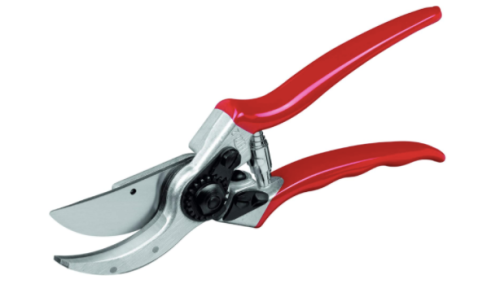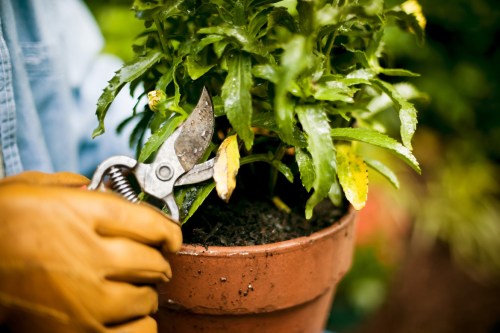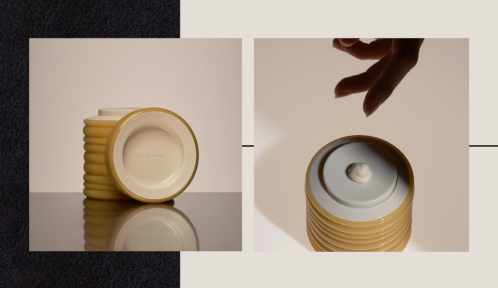Our editors independently select these products. Making a purchase through our links may earn Well+Good a commission
I’ve been told that the day your child gets their first haircut is an emotional one; I have yet to experience this because the only babies in my life are a lavender plant named Carla and an orchid named Helene. But apparently, giving your plants a trim is just as important as taking your kid to the barbershop (and don’t tell me otherwise). Yes, you might want to pick up some gardening shears because learning how to prune your plants is an act of love.
Experts in This Article
former director of brand marketing at The Sill
But, you may be wondering, why is this? “There are so many reasons you might find yourself learning how to prune a plant, including general grooming,” says Erin Marino, plant expert and editorial director of The Sill. “Pruning can help your plant grow compact and bushy, or allow you to remove dying foliage, allowing your plant to refocus its energy on healthy growth.”
“Pruning can help your plant grow compact and bushy, or allow you to remove dying foliage, allowing your plant to refocus its energy on healthy growth.” —Erin Marino, plant expert
And that’s just the beginning of how pruning can change your plant’s life. According to Marino, it can style a plant into a certain shape (particularly with bonsai trees), keep it contained to a certain pot, and remove dead or dying foliage. It might even result in creating lovely little floral siblings. And, yes, it can keep your plant’s foliage looking fresh if it’s grown a little unruly.
“Most leafy plants can benefit from the occasional pruning,” says Marino. “Sometimes that pruned foliage—if healthy—can be propagated into an entirely new plant. My favorite plant to prune and propagate is the Pothos, because I can easily propagate trimmed stems in water.”
The pruning tool you need in order to get started

Felco Classic Manual Hand Pruner — $59.00
Now that you’re interest is piqued, you’re probably eager to start snipping. But not so fast—we don’t want to give your flowers the botanical equivalent of a bowl cut. Make sure that you have the right equipment before you chop.
“Felco pruning shears are the traditional go-to for outdoor or larger plants, but indoors on I usually just use a pair of small scissors,” Marino says. “One thing to note is I clean them after each use.”
How to prune plants the right way, in 5 easy steps
1. First, look for a node
According to Marino, this is where the magic happens. “It’s where the leaf stalk, or petiole, attaches to the stem. Nodes have dormant buds, which can be activated to cause new stems and branches,” she says. “You’ll want to cut just above, but not too close, to the node.” This encourages the bud at that node to begin to develop.
2. If you don’t see a petiole or node, cut lower
Specifically, you’ll want to make your cut flush with the potting soil. Keep in mind, though, that not every single plant will even need consistent pruning like this. “Calatheas, for example, would be trimmed this way,” says Marino. “And when it comes to super slow growers like cacti, you probably wouldn’t find yourself in a position where you need to prune.”
3. Start fresh if your plant is on it’s death bed
There’s a really good reason why you should go in deep with the pruning if it looks like your plant is dying.
“If your plant’s foliage isn’t healthy, such as the leaves have a fungal infection that just won’t quit, prune your plant back in its entirety,” says Marino. “Remove all the unhealthy foliage above the surface of the potting mix. By doing that, you’re allowing your plant to refocus its energy on new, healthy growth, instead of sustaining unhealthy growth.”
4. Seasonal trims are encouraged
Think of it like a back-to-school haircut, and one that has an important utilitarian purpose.
“As we transition from summer to fall, the amount of light your plant receives will most likely decrease,” says Marino. “Your plant will have less energy to maintain all its new summer growth and may begin to drop some leaves. This is perfectly normal. Your plant is adjusting to the lower light levels. You can give your plants a hand by pulling off a few leaves to help them retain lush and bushy foliage.”
5. Don’t be afraid to prune your plants!
It can be super intimidating to cut away at something you’ve spent all summer nurturing into this big, gorgeous, only-browning-in-some areas plant! But, as Marino reminds me, plants are more resilient than we give them credit for. So, give yourself permission to prune liberally when you think it needs a touch up.
Sign up for the Well+Good SHOP Newsletter
Get exclusive deals on wellness, beauty, fitness, and food products that have been hand-picked by our editors.
Got it, you've been added to our email list.







